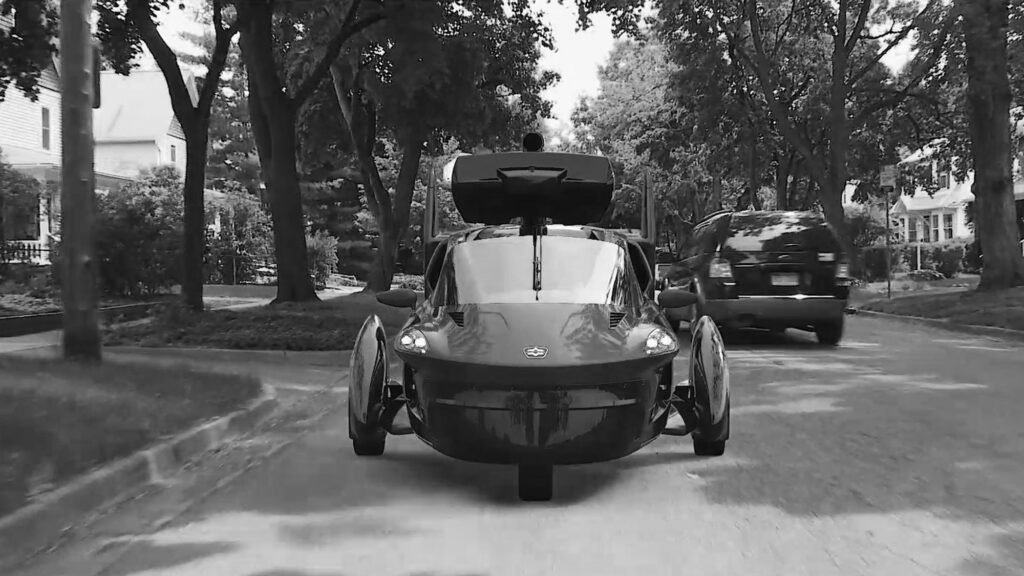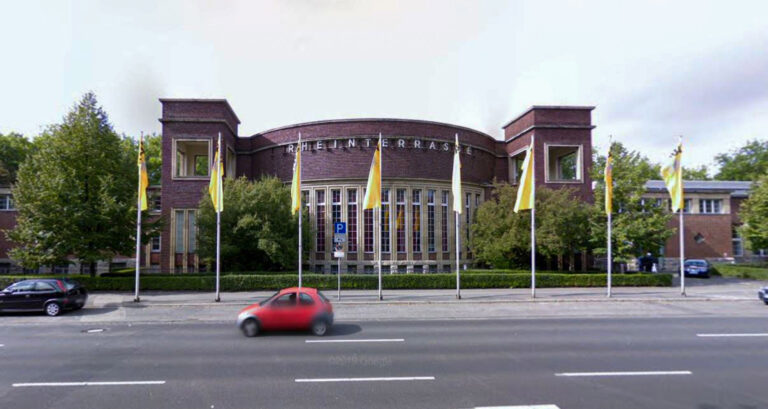This is the “world’s first” flying car which is finally ready to be launched to the public after years of battling to get permission to have it legally used on the roads.
The car, named the PAL-V Liberty, is set to receive its final inspection from the Dienst Wegverkeer (RDW, the Netherlands Vehicle Authority) and be authorised to be driven on the country’s roads in August.
The car, which has a foldable rotor on its roof and a hidden propeller at the front of its bonnet, was conceived and developed in the Dutch town of Raamsdonksveer, in the province of North Brabant, in the Netherlands, by the company PAL-V but has suffered several delays and setbacks during production.
The company announced in 2018 that the first flying cars would be delivered in 2019 but this has now been delayed until 2021.
But the company’s commercial director Marco van den Bosch told Newsflash that they were now on the final leg.
He said: “Next month, after the certification is finally given, we want to have a tour and visit several cities in the Netherlands.”
He said that the vehicle, which was painted orange because it is made in the Netherlands and also because orange “is a very nice colour”, was nevertheless available in two editions.
There is the limited edition Pal-V Liberty Pioneer Edition, which costs 499,000 EUR (455,063 GBP), and then the Pal-V Liberty Sport edition which costs 299,000 EUR (272,673 GBP).

However, despite impending permission for usage on the roads, it will still not be ready for people to simply take off when stuck in a traffic jam.
Instead, it is meant to take users from their garage to their end destination, but they will still need to travel to an airfield or a private airstrip of at least 250 metres (820 feet) in length.
He said: “The transformation from car to aircraft takes three minutes long. But unlike taking a cab to the airfield, then waiting hours for the plane to arrive and in order to board, and then having to do the same at the other end by finding a taxi get to the end destination, you can do it all in the Pal-V. The Pal-V gives you this mobility.”
He said after all the delays that they “solemnly promise” to have the vehicle on the roads after the final inspection.

He continued that it was a procedure, “we now know, which takes years”.
He continued: “On average about 11 years. We did not realise that properly, but there is light at the end of the tunnel. Because the licence of the RDW, which is necessary, is coming to the Netherlands to be on the road. We have received the green light from all the previous inspections, which means that we can be on the road next month (August).”
The licence would reportedly at first allow the vehicle to be driven anywhere in Europe, and they plan to take it worldwide next. To drive the vehicle on the road, one would only need a regular driving licence, and to fly it, one needs a gyrocopter licence.
The 140 shareholders of PAL-V are believed to have invested around 60 million EUR (54 million GBP) although this was not commented on by Marco.

He did say however that they had already sold more than 100 cars, including 40 to people in the Netherlands. The cars are already reportedly on the production lines, according to van den Bosch.
He said it will be great to see the cars finally on the roads in August this year and locals in the Netherlands’ North Brabant region will see the car in the air in April 2021.
A simulation video shows the car’s rotors and propellers being used to fly and a clip shows the car on a test drive, with a different model shown in the air. The vehicles are said to have a range of 1,200 kilometres (745 miles) on the road with a top speed of 180 kph (112 mph), and a range of 350 to 500 kilometres (220 to 310 miles) in the sky.
The company’s website says it is “the world’s first flying car” which was “inspired by nature, engineered by men and evolved over time, the PAL-V Liberty is a groundbreaking product that inaugurates the age of the flying car”. (https://bit.ly/39dW4Ff)

The Pal-V flying in the sky 
A good look at the Pal-V
In a press release, the chief engineer, Mike Stekelenburg, said: “The gyroplane principle not only provides us with a safe and easy-to-operate flying car but it also enables us to make it compact and within existing regulations, which is the most important factor to build a useable flying car.”
The company plans to manufacturer in Gujarat, India and aims to export PAL-V from India to the US, the Netherlands, the UK, etc., by 2021.
To find out more about the author, editor or agency that supplied this story – please click below.
Story By: Alex Cope, Sub-Editor: Joseph Golder, Agency: Newsflash
The Ananova page is created by and dedicated to professional, independent freelance journalists. It is a place for us to showcase our work. When our news is sold to our media partners, we will include the link here.




